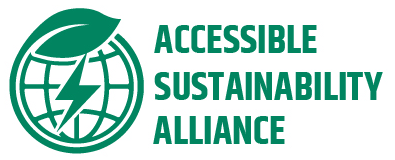Sustainability has become an essential priority in our efforts to combat climate change and preserve the planet for future generations. However, achieving a sustainable lifestyle can often feel out of reach for many due to financial, geographic, or systemic barriers. To truly create an environmentally friendly world, we must prioritize accessible sustainability—making eco-conscious choices practical and affordable for everyone.
Why Accessibility Matters
For many, sustainability is synonymous with expensive products, niche markets, or high-maintenance lifestyles. Organic foods, electric vehicles, and energy-efficient home upgrades often come with hefty price tags. While these investments are beneficial in the long term, they remain unattainable for individuals and families with limited incomes.
Furthermore, sustainability efforts frequently overlook systemic barriers. People in urban areas may have access to public transportation and recycling facilities, but rural communities often lack these resources. Similarly, individuals with disabilities may encounter challenges in accessing sustainable products or services that aren’t designed with inclusivity in mind.
To make a real impact, sustainability must be a shared opportunity—not a privilege.
Breaking Down Barriers
Creating accessible sustainability requires a multifaceted approach. Here are some strategies to ensure everyone can participate in eco-friendly living:
- Affordable Alternatives: Governments, businesses, and innovators can collaborate to produce cost-effective sustainable options. Subsidies for solar panels, energy-efficient appliances, and public transportation can make a significant difference.
- Community-Based Solutions: Localized initiatives, such as community gardens, tool-sharing programs, and freecycling groups, enable people to reduce waste and live sustainably without high costs.
- Educational Resources: Awareness is key to empowerment. Providing accessible information about low-cost sustainable practices—such as composting, repairing instead of replacing, and reducing single-use plastics—can help individuals make greener choices.
- Inclusive Design: Products and services must accommodate diverse needs. For instance, eco-friendly packaging should be easy to open for people with limited mobility, and public transit systems should be accessible to all.
- Corporate Responsibility: Companies play a critical role in making sustainability accessible. Businesses that adopt sustainable practices, reduce excess packaging, and provide eco-friendly options at competitive prices can drive significant change.
Simple Steps Everyone Can Take
Accessible sustainability is a collective effort, but there are small steps individuals can take today:
- Opt for reusable items, like water bottles and shopping bags, which save money over time.
- Support businesses and brands that prioritize sustainability and inclusivity.
- Share and borrow items instead of purchasing new ones.
- Reduce food waste by planning meals and freezing leftovers.
- Participate in local recycling or composting programs.
A Vision for the Future
Accessible sustainability is not just an ideal; it’s a necessity. As we navigate the path toward a greener future, inclusivity must remain at the forefront of our efforts. By removing barriers and empowering everyone to participate, we can build a sustainable world that benefits people and the planet alike.
In the end, sustainability thrives on collaboration. It’s about creating systems that make eco-friendly choices the default—not the exception. Together, we can ensure that sustainability is not just possible but practical and accessible for all.




